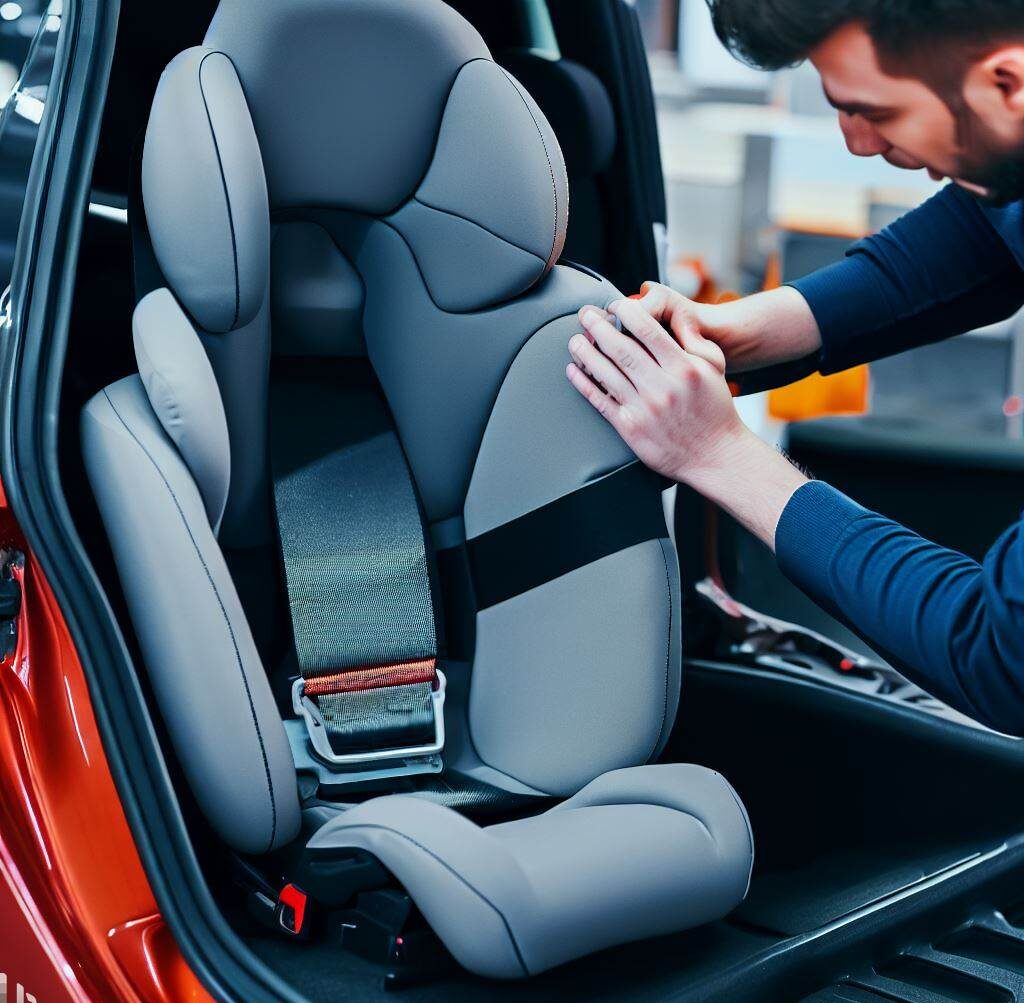How to Install a New Car Seat in 2023: A Comprehensive Guide

Installing a new car seat can be a daunting task, especially for first-time parents. However, with the right guidance and understanding of the basics, you can ensure your child’s safety in just a few minutes. This guide will walk you through how to install a new car seat, providing you with essential tips and steps to ensure your child’s safety.
We’ll also dispel some of the most common myths about car seat installation and help you understand the different types of seats available. Most importantly, we’ll give you the confidence you need to keep your little one safe on the road. Let’s get started!
Why is Proper Car Seat Installation Important?
Car seats are vital for protecting children in car accidents. According to the CDC, kids buckled into car seats have a significantly lower chance of injury compared to those wearing only seat belts. Shockingly, 46% of car seats are used incorrectly, as per the NHTSA. Thus, correct car seat usage can not only be a life-saving measure but is also a legal requirement in most states.
What you will need :
There are a few things you will need before you start:
- A car seat
- Car seat base (if applicable)
- Vehicle’s manual
- Car seat’s manual
- You’ll also want to make sure you have a few things handy to make the process go smoothly:
- A towel or blanket (to protect the car seat from dirt and scratches)
- An Allen wrench or screwdriver (to tighten or loosen the car seat’s tether strap, if applicable)
- Vehicle’s seat belt
- Once you have everything you need, you’re ready to get started.
Steps to Install a New Car Seat
- Choose the Right Position: The safest place for children under age 13 is the back seat. Decide whether the car seat should go on the driver or passenger side. If you have multiple children, consider their age and size when deciding the seating arrangement.
- Determine the Direction: For infants and toddlers, it’s recommended to have the car seat rear-facing until they reach the weight or height limit of their specific car seat model. As they grow, you can switch to a forward-facing position.
- Use the LATCH System or Seat Belt: Modern cars come with the LATCH (Lower Anchors and Tethers for Children) system, which makes the installation process easier. If your car doesn’t have this system or if the child outgrows the LATCH weight limits, use the seat belt to secure the car seat.
- Ensure Proper Angle and Position: For newborns, aim for a 45-degree angle. As the child grows, adjust the angle to about 35 degrees. Always refer to the car seat manual for specific guidelines.
- Do the Inch Test: Once installed, the car seat should not move more than one inch in any direction. If it does, it’s not secure enough.
- Check the Straps: Ensure that the straps are not twisted and that they are snug against your child. The chest clip should be at armpit level.
- Install the seat cover: If your car seat has a removable seat cover, now is the time to install it. Simply pull the cover over the seat and secure it in place.
Additional Tips:
- Always read the car seat manual and your vehicle’s owner manual for specific installation instructions.
- Avoid placing the car seat in front of an active airbag.
- Regularly check the car seat’s components and straps for any signs of wear or damage.
- Consider getting your installation checked by experts. Many organizations offer free car seat inspection events.
Final Checks
After installing the car seat, double-check the angle of the seat (your car seat manual will provide guidance on the correct angle). For rear-facing seats, ensure the car seat reclines at the correct angle to keep your baby’s head from falling forward.
Remember, installing a car seat properly is crucial for your child’s safety. If you’re unsure about the installation, seek help from a certified car seat technician or attend a car seat checkup event.
Final Thoughts
Installing a new car seat doesn’t have to be a daunting task. By understanding the basics, choosing the right position, securing the car seat properly, and performing final checks, you can ensure your child’s safety on the road.
Frequently Asked Questions
-
Can I install a car seat myself?
Yes, you can install a car seat yourself. In fact, it is recommended that you take the time to learn how to properly install your car seat to ensure the safety of your child. Most car seats come with detailed instructions, and many vehicle manuals also include information on car seat installation. Following the manufacturer’s instructions and your vehicle’s guidelines will help you install the car seat correctly.
-
Is it hard to install a car seat?
The difficulty of installing a car seat can vary depending on the type of car seat and the specific vehicle. While some car seats are relatively straightforward to install, others may be more complex. It’s essential to carefully read the instructions that come with your car seat and refer to your vehicle’s manual for guidance. Additionally, some communities and car seat manufacturers offer resources like installation clinics or videos to assist with the process.
-
Does the car seat go behind the driver or passenger?
The placement of the car seat depends on various factors, but the general recommendation is to place the car seat in the back seat of the vehicle. The American Academy of Pediatrics (AAP) advises using the back seat as the primary seating location for children. If you have only one car seat, it can be placed in the center of the back seat, as this is considered the safest position in the vehicle. However, if you have multiple car seats, you should follow the manufacturer’s instructions and your vehicle manual for proper placement.






